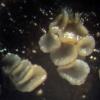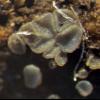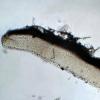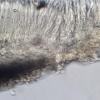
18-12-2025 17:23
 Bruno Coué
Bruno Coué
Bonjour,je serais heureux d'avoir votre avis sur c

18-12-2025 21:17
Pol DebaenstThe identification took me to Byssonectria deformi

18-12-2025 18:07
Margot en Geert VullingsThese plumes were found on rotten wood.They strong

17-12-2025 18:35
 Michel Hairaud
Michel Hairaud
Bonjour à tous/Hi to everyone I am passing along

15-12-2025 15:48
 Danny Newman
Danny Newman
Melanospora cf. lagenaria on old, rotting, fallen

15-12-2025 15:54
 Johan Boonefaes
Johan Boonefaes
Unknown anamorph found on the ground in coastal sa

15-12-2025 21:11
 Hardware Tony
Hardware Tony
Small clavate hairs, negative croziers and IKI bb

15-12-2025 07:09
 Danny Newman
Danny Newman
indet. Rutstroemiaceae sp. on unk. fallen leavesMc
 Hello dear colleagues and friends!
Hello dear colleagues and friends!Here is an interesting Mollisia/Pyrenopeziza from Ukraine. The specimen is dried, I hope for Mollisias it is not so critical as for other groups. With a Gminder's key I had a M. perparvula, but nevertheless Mollisias are difficult group and I cannot be sure.
The substrate is a twig of deciduos tree, ca 1 sm in diam.
Fruitbodies are light grey. KOH reaction is bright yellow, quickly disappearing in a mount.
Subhymenium hyaline, marginal cells are short, 2-3-celled
Asci with croziers, IKI bb (2 or 3), 49-63*4.7-5.4 um. Paraphyses filiform.
Spores 8.3-10.7*1.8-2.45(3) um, with scattered oil droplets or not.
Subiculum abundant, ca 3-4 um wide.
See photos attached. What do you think?
With best wishes,
Irina Morozova

with a yellow reaction it cannot be a Pyrenopeziza. And likewise with such subiculum. But more I cannot say.
Zotto

Differences between Mollisia/Pyrenopeziza/Tapesia are still not very clear for me.
Irina

Pyrenopeziza never contains refractive vacuoles (which are responsible for the yellow KOH-reaction), and these you would much better see with fresh apothecia.
Zotto









